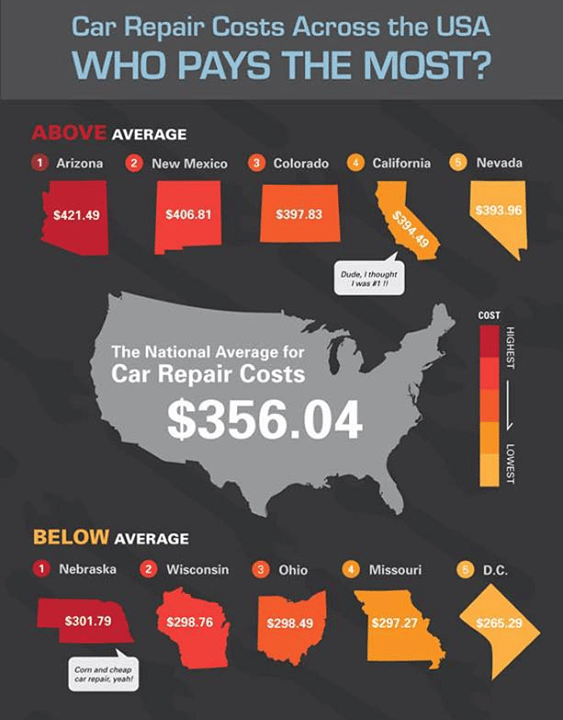Raise The Hood To Explore Frequent Brake System Concerns And Just How To Fix Them
Raise The Hood To Explore Frequent Brake System Concerns And Just How To Fix Them
Blog Article
Web Content Create By-Sharma Reynolds
When it involves your automobile's brake system, understanding typical issues can save you from prospective safety and security risks. From recognizing brake pad wear to attending to brake liquid leaks, recognizing just how to deal with these troubles is necessary. But what about those squishy brake pedals? There's a fix for that as well. Remain tuned to read more regarding these issues and the useful solutions that can maintain you securely when traveling.
Brake Pad Put On and Replacement
When it comes to maintaining your automobile's brake system, one important aspect to watch on is the wear and replacement of brake pads. Brake pads are essential components that press against the brake blades to decrease or stop your automobile. Gradually, these pads wear down due to rubbing, needing regular assessment and replacement to ensure your brakes function efficiently.
To figure out if your brake pads require replacement, listen for shrilling or grinding sounds when you use the brakes. Furthermore, if your car takes longer to stop or you discover vibrations or pulsations when braking, it may be time to replace the brake pads.
Disregarding https://emilianobwyuo.techionblog.com/31227232/engage-in-the-world-of-auto-repair-service-modern-technology-to-introduce-the-disruptive-advancements-that-are-reinventing-the-area can lead to decreased braking efficiency, damage to other brake parts, and even brake failing.
Replacing brake pads is a reasonably straightforward process for lots of cars. Nevertheless, if you're unclear or awkward doing this task, it's best to get in touch with a specialist auto mechanic to guarantee correct installation and ideal brake performance.
Frequently checking and changing brake pads is crucial for your safety and security and the longevity of your car's stopping system.
Brake Liquid Leaks and Maintenance
To guarantee your automobile's brake system works optimally, it is necessary to additionally pay attention to brake liquid leaks and maintenance. Brake liquid is important for transmitting the force from your foot on the brake pedal to the actual braking device. One common problem with brake fluid is leaks, which can happen due to shabby brake lines, seals, or connections. If you notice a pool or trickles under your car, it's necessary to attend to the leakage without delay to avoid a potential brake failing.
Consistently inspecting your brake fluid level is vital to maintaining your brake system. Reduced brake repair estimate can bring about air entering the brake lines, which jeopardizes braking efficiency.
Furthermore, old or contaminated brake fluid can impact the overall efficiency of your brakes. It's recommended to adhere to the manufacturer's guidelines on when to transform the brake liquid, usually every 2 years.
Spongy Brake Pedal: Blood Loss Brakes
If you have actually ever experienced a spongy brake pedal while driving, you understand the importance of maintaining a company and responsive braking system. One common root cause of a spongy brake pedal is air trapped in the brake lines. When air gets in the brake system, it can cause a loss of hydraulic pressure, causing that distressing squishy sensation when you press the brake pedal.
To resolve see more , hemorrhaging the brakes is required. Bleeding the brakes involves eliminating the air from the brake lines to restore proper hydraulic stress.
To hemorrhage the brakes, you'll require a helper to aid you. Begin by situating the brake bleeder shutoff on each wheel, generally found near the brake caliper. With a wrench, loosen up the shutoff and have your helper press the brake pedal while you observe any kind of air bubbles coming out. Repeat this process for each and every wheel, starting from the wheel farthest from the master cylinder and moving more detailed.
Once you no longer see air bubbles and only clear fluid emerges, tighten the valve and top up the brake fluid tank as needed. Hemorrhaging the brakes helps ensure a firm brake pedal and enhances overall stopping performance.
Final thought
Now that you comprehend common brake problems and how to repair them, you can guarantee your automobile's safety and security and efficiency. Bear in mind to pay attention for indication like shrilling sounds or mushy brake pedals, and address them promptly. Routine upkeep and timely substitutes are key to maintaining your brakes in leading condition. Stay aggressive and alert to your brake system to enjoy risk-free and trusted driving experiences.
